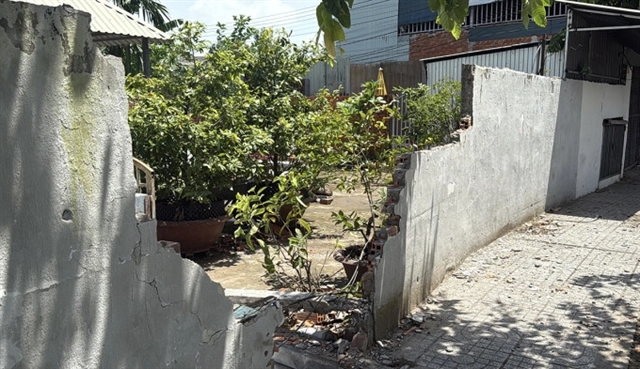 Business Beat
Business Beat

Since the beginning of the year the State Bank of Việt Nam has been increasing the reference rate of the đồng against the US dollar, and the Vietnamese currency has appreciated 0.43 per cent as a result.
| ||
| The buying and selling prices of the dollar are now at VNĐ23,200. — Photo openstock.vn |
Since the beginning of the year the State Bank of Việt Nam has been increasing the reference rate of the đồng against the US dollar, and the Vietnamese currency has appreciated 0.43 per cent as a result.
The buying and selling prices of the dollar are now at VNĐ23,200.
The central bank has bought nearly US$5 billion worth of the greenback in the first two months of the year, increasing its foreign reserves significantly.
The supply of dollars has also increased thanks to the fact that foreign portfolio investors have been on a buying spree on the stock market.
The inflow this year has been worth $150 million.
Foreign direct investment has risen 2.5 times from the same period last year to $8.47 billion.
Overseas remittances also saw a sharp increase.
The central bank is allowing the đồng to strengthen though there is no pressure on the currency and foreign exchange reserves are plentiful.
In 2016, Việt Nam decided to announce a daily reference rate for the đồng against the dollar each day, shifting from a fixed rate, to enable more flexibility.
The adjustment is based on daily changes to eight foreign currencies that strongly affect the Vietnamese economy: China’s yuan, Europe’s yuro, Japan’s yen, South Korea’s won, Taiwan’s new dollar, Thailand’s baht, Singapore’s dollar, and the US dollar.
But experts said though the reference rate is announced daily, there is a big gulf between it and the rate in the market.
The dollar has, in the unofficial market, been much weaker than in the banking system.
For instance, on March 11 the buying price of the dollar on the unofficial market was VNĐ23,205 compared to VNĐ23,160-23,180 in the official channel, while the selling price was VNĐ23,215 compared to VNĐ23,170-23,190.
Market observers said the Vietnamese currency weakened slower on the official market because the SBV capped its buying price at VNĐ23,200 to the dollar based on the central rate.
Some analysts disagreed with the central bank’s policy.
But many others said agencies in charge of monetary policy have their own reasons to decide on the reference rate.
The central bank wants to narrow the gap between the đồng and other currencies in the region.
In 2018 the đồng weakened by only 2.2-2.3 per cent against the dollar while many other currencies in the region fell sharply. For instance, the Chinese yuan fell by 5 per cent.
To weaken the đồng, the central bank bought large quantities of the greenback. Exporters are not complaining since their products are becoming more competitive with the depreciation of the Vietnamese currency.
The analysts also said the central bank’s decision to lower the central rate and weaken the đồng is also aimed at aligning the currency closer to the market rate.
This would help the central bank gradually realise its goal of doing away with the current policy of setting the reference exchange rate and having a +/- 3 per cent band within which banks can set their rates.
The analysts said enterprises with transactions denominated in dollars should take preventive action like hedging to avoid losses when the foreign exchange rate fluctuates strongly.
Banking sector might be set for M&A wave
Analysts believe that 2020 will be a do-or-die year for banks since the SBV has decreed that they must all meet global capital adequacy norms.
A wave of mergers and acquisitions (M&A) thus appears imminent.
According to Circular No 41/2016/TT-NHNN, banks must have a capital adequacy ratio (CAR) of at least 8 per cent from January 1, 2020, as stipulated under BASEL II standards.
Basel II is the second edition of the Basel Accords, which are recommendations on banking laws and regulations issued by the Basel Committee on banking supervision.
Four years ago the central bank selected the first 10 commercial banks to pilot Basel II standards. But to date only VIB and Vietcombank have joined the pilot scheme successfully while other lenders involved in the plans failed.
Analysts said to meet Basel II standards banks need to increase their capital but many, particularly the smaller lenders, have found it difficult to do so.
Last year, 18 out of the country’s 34 banks received approval from their shareholders to hike their capital, with their combined increase expected to be nearly VNĐ63 trillion ($2,74 billion).
But only a few of them, mainly large and medium-sized ones, realised these plans.
Analysts pointed to certain reasons for others’ inability, one of which was the plunging stock market, which has spooked investors.
In raising capital on the stock market, small banks are always at a disadvantage compared to big ones. Their shares are less attractive to investors because their dividend yields are low.
Another difficulty facing the banks is that the Government requires State-owned companies to pull out of non-core businesses including banks.
Foreign financial institutions are cautious about investing because of the unstable global financial situation. Because of this, many prefer to open a branch or establish a subsidiary rather than buy stakes in Vietnamese banks.
Banks that cannot increase their capital to the prescribed level would have only one option: to minimise their risk-weighted assets.
This means they would have to reduce credit growth.
Banks in the country still derive their revenues mainly -- 70 and 80 per cent -- from credit activities.
With revenues and profits down, it would be harder for them to mobilise capital.
Small banks might have to accept being merged with or acquired by other banks, sparking a new wave of M&As in the industry, analysts said.—VNS






.jpg)


.jpeg)